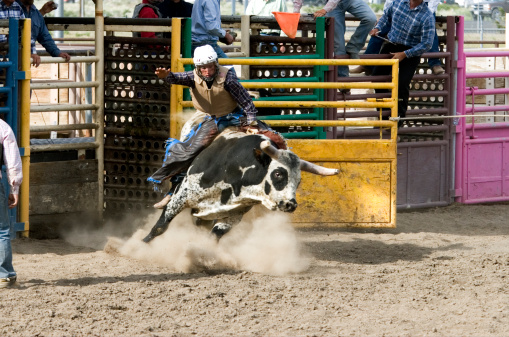General Rules of Footgolf
Before stepping onto the footgolf course, it's crucial to know the general rules. First, familiarize yourself with the 18-hole course layout, understanding each hole's challenges and obstacles. Choose the right ball, meeting official standards, and maintain its air pressure. Gameplay involves tee box protocol, respecting course etiquette, and strategic shot planning. Scoring low is key, and penalties come with lost balls, out-of-bounds, and hazards. Stay positive, have fun, and respect the game. As you start your footgolf journey, you'll discover more nuances to master this exciting game.
The Footgolf Course Layout
You'll typically find a Footgolf course laid out on an existing golf course, with 18 holes featuring distances ranging from 50 to 200 yards. As you navigate the course, you'll notice the clever use of obstacle placement to challenge your skills. Trees, bunkers, and water hazards are strategically positioned to test your accuracy and strategy. The course designers have carefully considered the layout to guarantee a fun and engaging experience for players of all levels.
The Greens maintenance is also vital in Footgolf. The grass must be well-manicured and even, allowing the ball to roll smoothly towards the hole. The speed and direction of the greens can greatly affect your gameplay, so it's crucial to adapt quickly to the course conditions. As you play, pay attention to the obstacles and the greens, and adjust your technique accordingly. With practice and patience, you'll master the art of Footgolf and enjoy the thrill of this exciting sport.
Ball Specifications and Size
When it comes to Footgolf, the ball you use is essential, and it's important that it meets specific size and weight requirements. A ball that's too light or too heavy can affect your game, and that's why it's necessary to choose a ball that meets the official standards.
Here are the specifications you should look for in a Footgolf ball:
| Specification | Minimum | Maximum |
|---|---|---|
| Weight (grams) | 260 | 320 |
| Diameter (inches) | 5.25 | 5.50 |
| Ball texture | Smooth, with 32 panels | Same as above |
| Manufacturer standards | Meets official Footgolf standards | Same as above |
| Air pressure (PSI) | 8.5 | 15.6 |
When selecting a ball, make sure it meets these requirements. The ball texture is also important, as it can affect the ball's aerodynamics and roll. Look for a ball with a smooth surface and 32 panels, as this will provide the best performance. Always choose a ball from a reputable manufacturer that meets the official Footgolf standards.
Playing the Game Basics
As you start playing footgolf, you'll need to get familiar with the course layout and rules. You'll learn that each hole has a designated tee box where you'll take your first shot, and understanding the tee box protocol is essential. From there, your ball is in play, and you'll need to navigate the course, following the rules to guarantee a smooth and enjoyable game.
Course Familiarization Needed
Familiarity with the course layout is essential, so take a few minutes to walk the grounds and get a feel for the terrain, obstacles, and pin placements before teeing off. This initial reconnaissance will pay off in the long run, as you'll be better equipped to navigate the course strategically. As you explore the course, take note of any challenging holes, tight fairways, or tricky obstacles that might require a more precise shot. This knowledge will help you develop a solid game strategy, allowing you to make informed decisions about which clubs to use, when to take risks, and how to manage your score.
Tee Box Protocol
With your course reconnaissance complete, you're ready to step up to the tee box, where the game begins in earnest. Here, you'll put your Starter Box Strategies to the test, employing Tee Box Etiquette to guarantee a smooth start to your round.
As you prepare to take your first shot, keep the following in mind:
- Respect the tee box: Allow the player with the honors (the best score on the previous hole) to tee off first. If you're playing with strangers, you can either flip a coin or let the most experienced player go first.
- Take your time, but not too much: You have a reasonable amount of time to take your shot, but don't delay the game. Be mindful of the players behind you and try to maintain a good pace.
- Keep it tidy: Make sure to rake the tee box and replace your divots to preserve the course's condition.
Ball in Play
You're now ready to put your footgolf skills into action, taking your first shot and setting the ball in play. As you play, remember that the ball is in play as soon as it's kicked from the tee box. From then on, you'll need to navigate the course, using your skills to overcome obstacles and reach the hole.
Here are some key rules to keep in mind when the ball is in play:
| Situation | Rule | Penalty |
|---|---|---|
| Ball out of bounds | Re-kick from previous spot | 1 stroke |
| Ball lost or not found | Re-kick from previous spot | 1 stroke |
| Unfair advantage taken | Warning or penalty stroke | 1 stroke |
| Ball moved by natural forces | Play from new position | No penalty |
| Ball kicked out of bounds on purpose | Disqualification | – |
Scoring and Winning Conditions
As you play footgolf, you'll quickly realize that scoring is essential to winning the game. You'll earn points by completing each hole in the fewest strokes possible, with the goal of achieving the lowest score at the end of the round. Your score will be the total number of strokes you've taken on all holes, so keeping track of your points is vital to emerging victorious.
Counting Strokes Matters
Your score in Footgolf is determined by counting the number of strokes you take to complete each hole. Managing your strokes wisely is vital, as the player with the lowest total score at the end of the round wins. Effective stroke management is key in Footgolf, and it requires a combination of strategy and skill.
Here are three key takeaways to help you master stroke management:
- Plan your shots: Take a moment to assess each hole and plan your approach. Consider the distance, obstacles, and wind direction to determine the best route to the hole.
- Choose the right ball: Select a ball that suits your playing style and the course conditions. A ball with the right weight, size, and texture can make a significant difference in your game.
- Practice your short game: The short game is vital in Footgolf. Focus on developing your skills in the short game to reduce your score and gain an edge over your opponents.
Winning the Game
In Footgolf, the game is won by the player who achieves the lowest total score at the end of the round, with the winner being the first to complete all 18 holes. As you step onto the course, you'll need to develop a solid game strategy to come out on top. This involves managing your shots, minimizing mistakes, and capitalizing on opportunities to score low.
In team play, understanding team dynamics is vital. Communication and coordination with your teammates can make all the difference in achieving a winning score. You'll need to work together to overcome obstacles, share strategies, and support each other through the highs and lows of the game. Remember, the team with the lowest aggregate score at the end of the round takes the win.
As you navigate the course, stay focused, and keep your eyes on the prize. With a clear head, a solid strategy, and a strong team behind you, you'll be well on your way to winning the game. So, get ready to tee off, and may the best player or team win!
General Gameplay Rules
You're expected to play footgolf with the same spirit of sportsmanship and respect for others as you would in traditional golf. The game is designed to be enjoyable for everyone involved, so remember to keep a positive attitude and show respect towards your opponents, referees, and the course.
Here are some essential general gameplay rules to keep in mind:
- Game Strategies: Develop your own strategies to tackle each hole, taking into account the terrain, obstacles, and distance to the hole.
- Referee Roles: Familiarize yourself with the referee's responsibilities, including monitoring gameplay, resolving disputes, and enforcing rules.
- Course Etiquette: Maintain the course's integrity by repairing ball marks, raking bunkers, and avoiding damage to the green.
Penalties and Faults Guidelines
Penalties and faults are an essential part of the game, and understanding the guidelines for each is vital to maintaining the integrity of the game and ensuring a fair experience for all players. As you navigate the course, it's important to know how to handle mistakes and mishaps.
Here's a breakdown of common penalties and faults:
| Fault | Penalty |
|---|---|
| Out of bounds | 1 stroke penalty, replay from original position |
| Lost ball | 1 stroke penalty, replay from original position or drop zone |
| Hazard Areas (water, obstacles) | 1 stroke penalty, drop behind hazard |
| Unplayable lie | 1 stroke penalty, drop within 2 club lengths |
| Failure to complete hole | Score of 6, or highest score of the group |
Course Etiquette and Safety
Having mastered the rules for penalties and faults, it's crucial to focus on the social aspect of the game, making sure you're respectful of the course, fellow players, and yourself. Now that you're well-versed in the technicalities, understanding the importance of course etiquette and safety is vital.
To guarantee a pleasant experience for everyone, keep the following in mind:
- Respect the course: Avoid damaging the greens, tee boxes, or any other course features. Take your trash with you and keep the area clean.
- Be mindful of your fellow players: Keep noise levels down, avoid disturbing other players, and be patient when waiting for your turn.
- Attend safety briefings: Pay attention to safety instructions provided by course staff, and be aware of potential hazards such as steep slopes or wildlife.
Frequently Asked Questions
Can I Wear Football Boots With Metal Studs on the Course?
"You can't wear football boots with metal studs on the course, as they'll damage the turf and compromise safety – it's about respecting the ground and ensuring a smooth game for everyone."
Are Golf Bags Allowed to Carry Footgolf Equipment?
As you tee off, remember, you're not lugging a heavy burden – you're carrying freedom! You're allowed to bring your own equipment, but be mindful of bag restrictions, ensuring your gear fits neatly, with no Equipment Options overflowing.
Can I Play With a Friend Who Is Not a Registered Player?
You're free to play with a friend who isn't registered, enjoying casual outings and social gatherings on the course, no membership required, just grab your balls and have fun!
Do I Need to Book a Tee Time to Play Footgolf?
'You'll typically need to book a tee time to play footgolf, as courses have varying availability and booking policies; it's best to check with the course beforehand to guarantee a smooth, hassle-free experience.'
Can I Bring My Dog to the Footgolf Course?
"Unlike noisy, crowded dog parks, you're wondering if you can bring your furry friend to the serene footgolf course. Yes, many courses are pet-friendly, but it's best to call ahead; service animals are always welcome, though."






